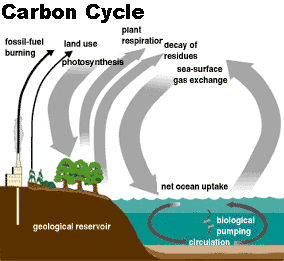 Climate Change: Quick Facts
Climate Change: Quick Facts
| 1.The earth’s climate is regulated largely by the biogeochemical process know as the carbon cycle. The global carbon cycle circulates hundreds of billions of tons of carbon annually among various terrestrial, oceanic and atmospheric sources. Carbon in the atmosphere in the form of CO2, is the most abundant of several trace gases that are responsible for the “greenhouse effect.” |
|
|
2. The greenhouse effect is a natural process responsible for keeping the earth warmer than it otherwise would be if all the heat generated by solar energy hitting the earth''s surface were reradiated back into space. It is the layer of CO2 and other Greenhouse Gases (GHGs) in the upper atmosphere which trap the reradiating heat and make the earth approximately 32C warmer than it otherwise would be.
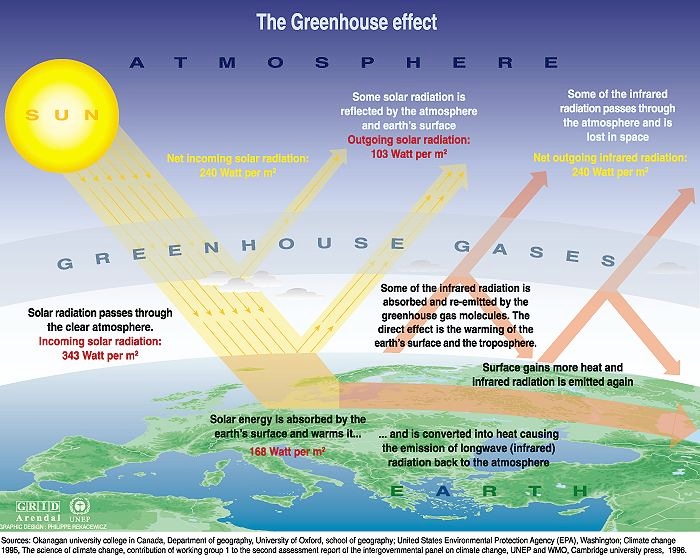
3.The warming of the earth by the greenhouse effect was a critical factor in the evolution of life on the planet. The greenhouse effect is responsible for the earth being a water rather than an ice planet. All living things depend on specific climatic environments to thrive. Many species cannot survive outside a rather narrow set of climate conditions which are significantly influenced by the greenhouse effect. |
|
|
4.The atmospheric concentration of C02 has changed considerably over the long history of the planet, but has been fairly stable over the last 400,000 years, remaining below 300 ppm over this period. Ever since the rise of human civilizations some 5000-6000 years ago, and up to about 1800, atmospheric C02 levels fluctuated within an even narrower range of 250-290 ppm.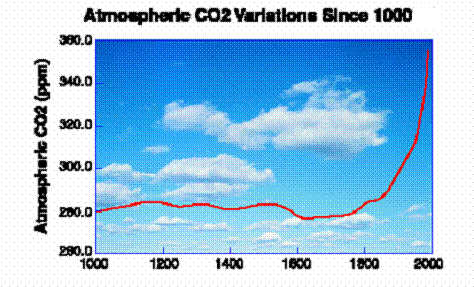 |
|
|
5. Since the beginning of the industrial period, when atmospheric CO2 concentrations were approximately 275 ppm, atmospheric CO2 concentrations rose to 375 ppm by 2000, an increase of over 30%. | |
|
|
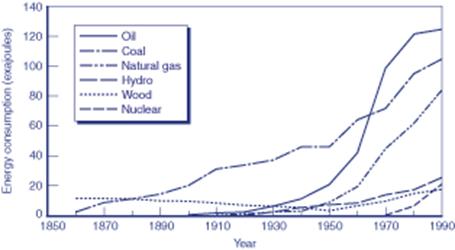 6. Human use of fossil fuels since the beginning of the industrial revolution (largely coal,oil and natural gas) is the primary cause of this increase in atmospheric CO2 concentrations. Land clearing was the most important factor prior to about 1900, and remains the second largest driver of CO2 increases after fossil fuels. 6. Human use of fossil fuels since the beginning of the industrial revolution (largely coal,oil and natural gas) is the primary cause of this increase in atmospheric CO2 concentrations. Land clearing was the most important factor prior to about 1900, and remains the second largest driver of CO2 increases after fossil fuels.
| |
|
|
7. Scientists overwhelmingly agree that these well established changes in GHG production by humans will affect global climate. It is less clear precisely what changes in climate will occur due to projected increases in GHG levels over the current century. The majority of scientists project several major effects: a global temperature increase of from 1 to 5 degrees C, increased precipitation, and less stable weather patterns. 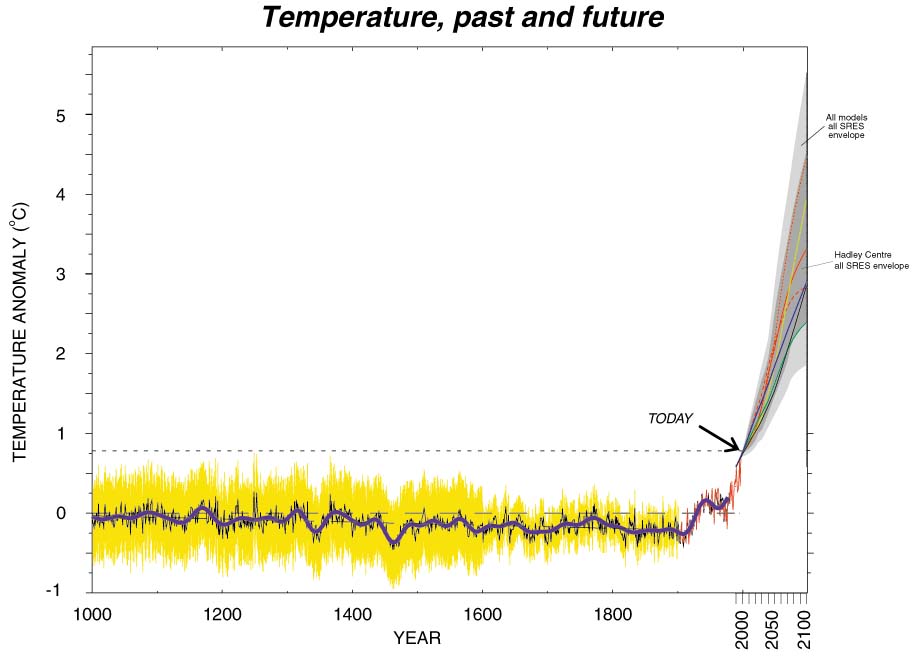 | |
|
8. Continued human-induced emission of GHGs at the current rate will lead to a level of atmospheric CO2 concentration which is at least 2 to 3 times the preindustrial level by 2100. Even higher emission rates are projected over future decades. Such increases will result in dramatic climate changes that would adversely affect all human societies on the planet, in addition to numerous plant and animal species.
|
|
|
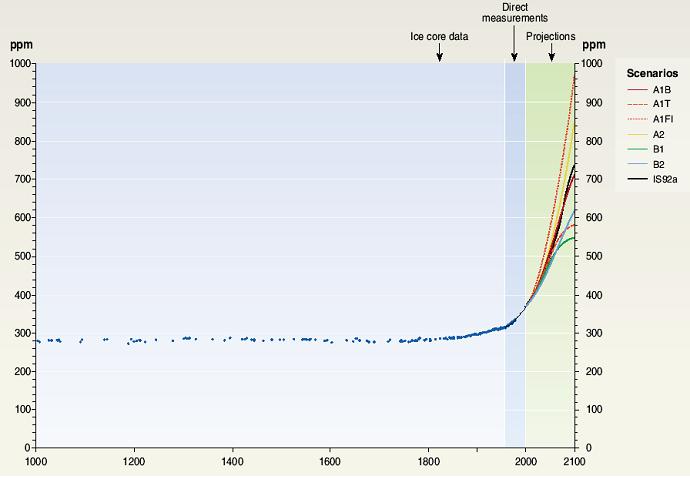
9. Some of the impacts associated with different levels of climate change include: reduction of many crop yields, drying of tropical soils, loss of coastline infrastructure due to a rising sea level, increased spread of insect borne diseases as their ranges vary, significant biodiversity loss due to changing habitat and climate conditions, new and more frequent disease outbreaks in domestic and farm animals more frequent and severe storms, more forest fires, loss of coral reefs, and more flooding, among other impacts. | |
|
|
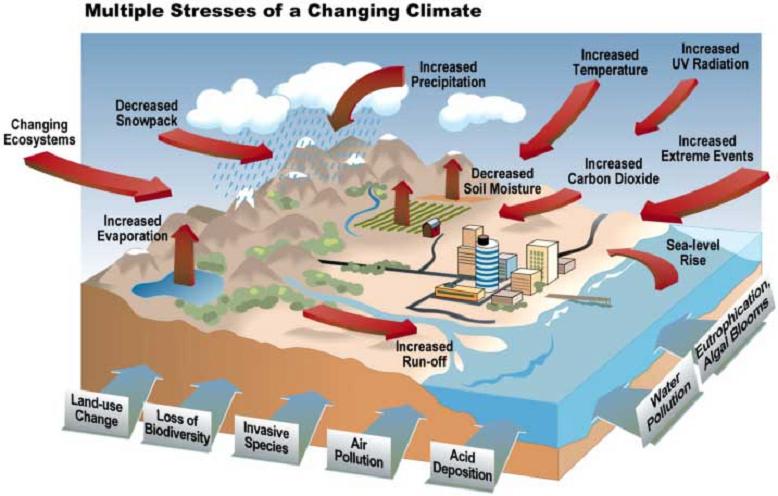
10. How serious these climate induced changes are will depend on how much GHGs we continue to emit. Scientists agree that the more GHGs emitted the more serious and costly the damages will be. |
|
|
11. Unchecked, increased concentrations of GHGs in the atmosphere could alter the global carbon cycle irrevocably. If this complex yet robust global biogeochemical cycle is altered in this way, the impact on human civilization would be catastrophic, as new global weather patterns would be established, which are likely to be far less suitable to life as we know it. |